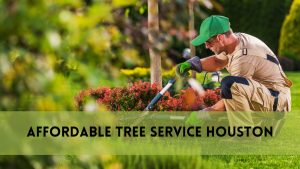Dealing with a dead tree at home can be quite challenging, but fear not! In this comprehensive guide, we’ll walk you through the steps to effectively handle the situation and ensure the safety of your property. From recognizing the signs of a dead tree to removal options and potential DIY solutions, we’ve got you covered.
Recognizing the Signs of a Dead Tree: Deal with A Dead Tree at Home
Spotting a dead tree is the first step in addressing the issue. Keep an eye out for bare branches, lack of new growth, and discolored or decaying bark. If you notice these signs, it’s time to take action to prevent potential hazards.
Identifying a dead tree early is crucial to avoid safety risks, such as falling branches or the entire tree collapsing. Regular inspections of your trees can help you catch any problems before they escalate.
Assessing the Risks and Hazards To Deal With Dead Trees
Before diving into removal options, it’s essential to assess the risks and hazards associated with a dead tree. Consider the tree’s proximity to your home, power lines, and neighboring properties.
Factors such as the tree’s size and the extent of decay will influence the removal strategy. Professional arborists can conduct a risk assessment and provide valuable insights into the best course of action. Their expertise ensures a safe and efficient removal process, minimizing potential damage to your property.
DIY Solutions for Small Dead Trees
If the dead tree on your property is relatively small, you might consider tackling the removal process yourself. Here are some DIY solutions to help you get started:
- Pruning Dead Branches: Use a sturdy pair of pruning shears or a handsaw to remove dead branches. This can improve the tree’s appearance and reduce the risk of falling debris.
- Cutting and Chipping: For smaller dead trees, cutting them down and chipping the wood can be a manageable DIY project. Ensure you have the right tools, including a chainsaw and wood chipper, and take proper safety precautions.
Professional Dead Tree Removal Services
When dealing with larger dead trees or those in close proximity to structures, enlisting the help of professional tree removal services is often the safest option. Certified arborists have the expertise and equipment needed to assess, fell, and remove dead trees efficiently.
Professional services may include:
- Tree Inspection: A thorough assessment of the tree’s health and stability.
- Safe Tree Felling: Using specialized equipment to safely bring down the tree in sections.
- Stump Removal: Complete extraction of the tree stump to prevent regrowth and enhance the aesthetics of your property.
Environmental Considerations and Recycling Dead Trees
Rather than disposing of the dead tree material, consider environmentally friendly alternatives. Recycling options for dead trees include:
- Wood Chipping: Convert branches and smaller limbs into wood chips for landscaping or mulch.
- Timber Recycling: Larger sections of the tree can be repurposed for furniture, firewood, or other creative projects.
- Composting: Use leaves and smaller organic material for composting, promoting sustainability in your garden.
Cost Considerations and Budgeting For Dead Tree Removal
Understanding the costs associated with tree removal is crucial for effective budgeting. Factors influencing the cost include:
- Tree Size: Larger trees generally require more labor and equipment, leading to higher costs.
- Location: Accessibility to the tree and proximity to structures can impact pricing.
- Services Needed: Stump removal and additional services contribute to the overall cost.
Obtaining multiple quotes from reputable tree removal services will help you make an informed decision based on your budget and specific needs.
Permits and Regulations
Before initiating any tree removal, it’s important to research local permits and regulations. Some areas require permits for tree removal, especially for larger trees or those within designated conservation zones.
Contact your local municipality or forestry service to inquire about necessary permits and ensure compliance with environmental regulations.
FAQs
How can I tell if a tree on my property is dead?
Look for signs such as bare branches, lack of new growth, and decaying bark. Dead trees may also exhibit discoloration or fungus growth. Regular inspections can help you identify these indicators early on.
Is it safe to remove a small dead tree on my own?
For smaller dead trees, DIY removal is possible. Use appropriate tools like pruning shears or a chainsaw, and take safety precautions. However, if the tree is large or near structures, it’s advisable to seek professional help to ensure safety.
How much does professional tree removal cost?
The cost varies based on factors like tree size, location, and services needed (e.g., stump removal). It’s best to obtain quotes from reputable tree removal services to determine a budget that suits your specific requirements.
Are there environmentally friendly options for disposing of a dead tree?
Yes, consider recycling options such as wood chipping for landscaping, repurposing timber for creative projects, or composting smaller organic material. These eco-friendly alternatives contribute to sustainability.
Do I need a permit to remove a dead tree from my property?
In some areas, permits are required for tree removal, especially for larger trees or in designated conservation zones. Check with your local municipality or forestry service to understand and comply with any necessary regulations before initiating the removal process.
Conclusion
In conclusion, dealing with a dead tree at home involves a careful assessment of the situation, recognizing potential risks, and choosing the appropriate removal method. Whether opting for a DIY approach with smaller trees or seeking professional services for larger ones, safety should always be the top priority.
By understanding the signs of a dead tree, assessing risks, and considering environmental factors, you can navigate the process with confidence. Remember to research local regulations, obtain necessary permits, and budget accordingly to ensure a smooth and efficient tree removal experience.
Taking proactive steps to address a dead tree not only enhances the safety of your property but also contributes to the overall well-being of your environment. So, roll up your sleeves, assess your trees, and take the necessary steps to create a safer and more beautiful living space.




